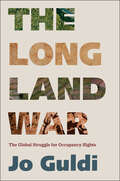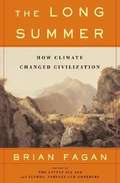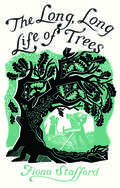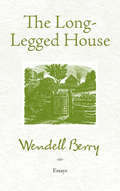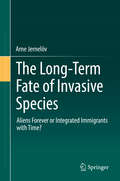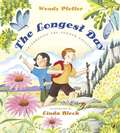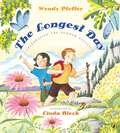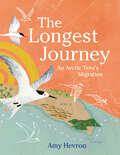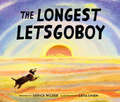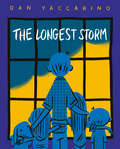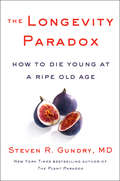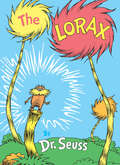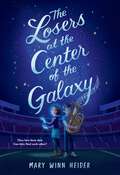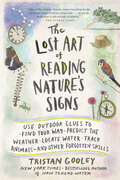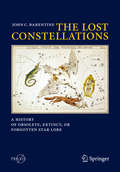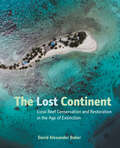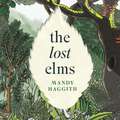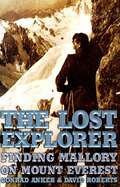- Table View
- List View
The Long Land War: The Global Struggle for Occupancy Rights (Yale Agrarian Studies Series)
by Jo GuldiA definitive history of ideas about land redistribution, allied political movements, and their varied consequences around the world &“An epic work of breathtaking scope and moral power, The Long Land War offers the definitive account of the rise and fall of land rights around the world over the last 150 years.&” —Matthew Desmond, Pulitzer Prize–winning author of Evicted: Poverty and Profit in the American City Jo Guldi tells the story of a global struggle to bring food, water, and shelter to all. Land is shown to be a central motor of politics in the twentieth century: the basis of movements for giving reparations to formerly colonized people, protests to limit the rent paid by urban tenants, intellectual battles among development analysts, and the capture of land by squatters taking matters into their own hands. The book describes the results of state-engineered &“land reform&” policies beginning in Ireland in 1881 until U.S.-led interests and the World Bank effectively killed them off in 1974. The Long Land War provides a definitive narrative of land redistribution alongside an unflinching critique of its failures, set against the background of the rise and fall of nationalism, communism, internationalism, information technology, and free-market economics. In considering how we could make the earth livable for all, she works out the important relationship between property ownership and justice on a changing planet.
The Long Summer
by Brian M. FaganThe Long Summer illuminates the centuries-long pattern of human adaptation to the demands and challenges of an ever-changing climate-challenges that are still with us today.
The Long, Long Life of Trees
by Fiona StaffordA lyrical tribute to the diversity of trees, their physical beauty, their special characteristics and uses, and their ever-evolving meanings Since the beginnings of history trees have served humankind in countless useful ways, but our relationship with trees has many dimensions beyond mere practicality. Trees are so entwined with human experience that diverse species have inspired their own stories, myths, songs, poems, paintings, and spiritual meanings. Some have achieved status as religious, cultural, or national symbols. In this beautifully illustrated volume Fiona Stafford offers intimate, detailed explorations of seventeen common trees, from ash and apple to pine, oak, cypress, and willow. The author also pays homage to particular trees, such as the fabled Ankerwyke Yew, under which Henry VIII courted Anne Boleyn, and the spectacular cherry trees of Washington, D. C. Stafford discusses practical uses of wood past and present, tree diseases and environmental threats, and trees' potential contributions toward slowing global climate change. Brimming with unusual topics and intriguing facts, this book celebrates trees and their long, long lives as our inspiring and beloved natural companions.
The Long-Legged House: Essays
by Wendell BerryFirst published in 1969 and out of print for more than twenty-five years, The Long-Legged House was Wendell Berry's first collection of essays, the inaugural work introducing many of the central issues that have occupied him over the course of his career. Three essays at the heart of this volume-"The Rise," "The Long-Legged House," and "A Native Hill" -are essays of homecoming and memoir, as the writer finds his home place, his native ground, his place on earth. As he later wrote, "What I stand for is what I stand on," and here we see him beginning the acts of rediscovery and resettling.
The Long-Term Fate of Invasive Species
by Arne JernelövThis book examines the long-term fate of invasive species by detailing examples of invaders from different zoological and botanical taxa from various places around the world. Readers will discover what happened, after a century or so, to 'classical' invaders like rabbits in Australia, house sparrows in North America, minks in Europe and water hyacinths in Africa and Asia. Chapters presented in the book focus on eighteen species in the form of in-depth case studies including: earthworms, zebra mussels, Canadian water weed, Himalayan balsam, house sparrows, rabbits, crayfish plague, Colorado beetles, water hyacinths, starlings, Argentine ant, Dutch elm disease, American mink, cane toad, raccoons, Canadian beavers, African killer bees and warty comb jelly. Invaded areas described are in Africa, Asia, Australia, Europe, North America, Pacific islands, and South America. Readers will get some ideas about the likely future of current invaders from the fate of old ones. This book is intended for undergraduates studying environmental sciences, researchers and members of environmental NGO's.
The Longest Day: Celebrating the Summer Solstice
by Wendy Pfeffer Linda Bleck<p>A science-oriented nonfiction picture book about the summer solstice- sure to be a classroom favorite! <p>In this fourth and final book in the series about seasons, Wendy Pfeffer turns her attention to summer, when butterflies emerge from silky cocoons and daylight hours stretch longer and longer. With lyrical prose and vibrant illustrations, The Longest Day takes us on a journey through the history and science behind the summer solstice, with a focus on summer celebrations from various cultures around the world. Teachers and students alike will treasure the varied and accessible knowledge, and activities in the back let everyone in on the festivities.</p>
The Longest Day: Celebrating the Summer Solstice
by Wendy PfefferIn this fourth and final book in the series about seasons, Wendy Pfeffer turns her attention to summer, when butterflies emerge from silky cocoons and daylight hours stretch longer and longer. With lyrical prose and vibrant illustrations, The Longest Day takes us on a journey through the history and science behind the summer solstice, with a focus on summer celebrations from various cultures around the world. Teachers and students alike will treasure the varied and accessible knowledge, and activities in the back let everyone in on the festivities.
The Longest Journey: An Arctic Tern's Migration
by Amy HevronFollow the epic annual migration of an Arctic Tern on its sixty-thousand-mile journey to the South Pole and back again, the longest such migration in the animal kingdom. In their thirty-year lifetimes, Arctic Terns travel nearly 1.5 million miles, that&’s enough to fly to the Moon and back three times! Each year they brave blistering winds, storms, rough seas, and airborne predators as they travel between the Earth&’s poles, chasing the summer. In The Longest Journey: An Arctic Tern&’s Migration, we follow one such bird as it spreads its wings and sets out to make its first globe-spanning trip with its flock. Amy Hevron is the illustrator of Trevor by Jim Averbeck, the recipient of multiple starred reviews. She also illustrated Candace Fleming&’s The Tide Pool Waits which was the recipient of the Portfolio Honor Award from the Society of Children's Book Writers and Illustrators. Her brilliant, naturalistic artwork mimicking maps and nautical charts is supported by extensive research and paired with material at the back of the book explaining the science behind the life cycle of Arctic Terns. A Junior Library Guild Gold Standard Selection
The Longest Letsgoboy
by Derick WilderHomeward Bound: The Incredible Journey meets Dog Heaven in this profoundly beautiful book about the special relationship between kids and dogs, the importance of language, and finding the meaning of life even in its final days.Poignant, hopeful, and lovingly told, this dog's journey—told by the dog himself in his own unique words—proves that love abides beyond a lifetime, out of sight but never far away.As a dog and his little girl go on their final walk together, he experiences the sights, smells, and wonders of this world one last time before peacefully passing on. But for such a good boy (oh yes, he is!) and his foreverfriend, that doesn't mean it's the end.Offering a unique and noteworthy take on death, this book balances the somber topic with a dog's ever-optimistic viewpoint, all woven together with its unconventional yet fitting approach to language.Family members, librarians, art-lovers, and educators alike will use this book as an accessible and comforting introduction to the ever-difficult topic of death, discussed and related in a new way with hopeful, uplifting, innovative language.THE PERFECT BOOK TO TALK ABOUT LOSS: The perennial themes of grief, fear, and death are always relevant and classic discussion topics even in families not yet dealing with death. The perfect answer to kids' big questions about what happens when we die, this book will be a standard in every home library.CREATIVE USE OF LANGUAGE: The words in this book are incredibly special, with phrases that conjure how the dog sees the world. The enjoyable challenge of matching up "letsgoboy" to a walk or "pufftails" to rabbits will make for meaningful discussions on a parent's lap or in a classroom reading circle.TEACHES CHILDREN EMPATHY: Reading this story from the dog's perspective is the perfect way for young readers to understand that the way another character thinks and perceives the world is different from their own experience.A BEAUTIFUL DOG STORY: Ideal for readers who love dogs, want dogs, or are going through a grieving process for their family dog, this book celebrates all that is most magical about these animals who are always by our side.A COMFORTING MESSAGE: It's rare for a book about death to extend beyond the moment of dying. The continuation of the dog's story past this point makes it special and especially comforting.Perfect for: parents and caregivers, dog lovers, educators
The Longest Race: A Lifelong Runner, An Iconic Ultramarathon, and the Case for Human Endurance
by Ed Ayres“It soon becomes clear that this book isn’t just about an athletic race. It’s also about the human race” (Bloomberg Businessweek). Having run in more than six hundred races over the span of fifty-five years, Ed Ayres is a legendary distance runner—and this book is his urgent exploration of the connection between individual endurance and a sustainable society. The Longest Race begins at the starting line of the 2001 JFK 50 Mile—the nation’s oldest and largest ultramarathon and, like other such races, it’s an epic test of human limits and aspiration. At age sixty, his sights set on breaking the age-division record, Ayres embarks on a course over the rocky ridge of the Appalachian Trail, along the headwind-buffeted towpath of the Potomac River, and past momentous Civil War sites such as Harpers Ferry and Antietam. But even as Ayres focuses on an endurance runner’s familiar concerns—starting strong and setting the right pace, controlling his breathing, overcoming fatigue, and staying mindful of the course ahead—he finds himself as preoccupied with the future of our planet as with the finish line. A veteran journalist and environmental editor, Ayres reveals how the skills and mindset necessary to complete an ultramarathon are also essential for grappling anew with the imperative to endure—not only as individuals, but as a society—and not just for fifty miles, but over the real long haul, in a unique meditation that “ought to be required reading even for people who have never run a step” (The Boston Globe). “He seamlessly moves between discussing running to exploring larger life issues such as why we run, our impact on the environment, and the effects of the nation’s declining physical fitness . . . Thought provoking.” ―Booklist “To read this book is to run alongside a seasoned athlete, a deep thinker, and a great storyteller. And Ayres doesn’t disappoint: He is the best kind of running companion, generously doling out hilarious stories and hard-won insights into performance conditioning and the human condition. His lifetime of ultra-running and environmental writing drive his exploration of what keeps us running long distances―and what it might take to keep the planet from being run into the ground.” ―Nature Conservancy magazine
The Longest Storm
by Dan YaccarinoA New York Times 2021 Best Children's BookThis heartwarming family story from acclaimed author-illustrator Dan Yaccarino features a father and his kids who are stuck inside the house together — and figure out how to connect and overcome conflict. No one knew where the strange storm came from, or why it lasted so long. The family at the center of this timely story has to hunker down together, with no going outside - and that's hard when there's absolutely nothing to do, and everyone's getting on everyone else's nerves. This classic in the making will lift hearts with its optimistic vision of a family figuring out how to love and support one another, even when it seems impossible.
The Longevity Paradox: How to Die Young at a Ripe Old Age (The Plant Paradox #4)
by Dr. Steven R Gundry, MDFrom the author of the New York Times bestseller The Plant Paradox comes a groundbreaking plan for living a long, healthy, happy life.From the moment we are born, our cells begin to age. But aging does not have to mean decline. World-renowned surgeon Dr. Steven Gundry has been treating mature patients for most of his career. He knows that everyone thinks they want to live forever, until they hit middle age and witness the suffering of their parents and even their peers. So how do we solve the paradox of wanting to live to a ripe old age—but enjoy the benefits of youth?This groundbreaking book holds the answer. Working with thousands of patients, Dr. Gundry has discovered that the “diseases of aging” we most fear are not simply a function of age; rather, they are a byproduct of the way we have lived over the decades. In The Longevity Paradox, he maps out a new approach to aging well—one that is based on supporting the health of the “oldest” parts of us: the microorganisms that live within our bodies.Our gut bugs—the bacteria that make up the microbiome—largely determine our health over the years. From diseases like cancer and Alzheimer’s to common ailments like arthritis to our weight and the appearance of our skin, these bugs are in the driver’s seat, controlling our quality of life as we age.The good news is, it’s never too late to support these microbes and give them what they need to help them—and you—thrive. In The Longevity Paradox, Dr. Gundry outlines a nutrition and lifestyle plan to support gut health and live well for decades to come. A progressive take on the new science of aging, The Longevity Paradox offers an action plan to prevent and reverse disease as well as simple hacks to help anyone look and feel younger and more vital.
The Lorax (Classic Seuss)
by Dr. SeussCelebrate Earth Day with Dr. Seuss and the Lorax in this classic picture book about protecting the environment! I am the Lorax. I speak for the trees. Dr. Seuss&’s beloved story teaches kids to speak up and stand up for those who can&’t. With a recycling-friendly &“Go Green&” message, The Lorax allows young readers to experience the beauty of the Truffula Trees and the danger of taking our earth for granted, all in a story that is timely, playful and hopeful. The book&’s final pages teach us that just one small seed, or one small child, can make a difference. Printed on recycled paper, this book is the perfect gift for Earth Day and for any child—or child at heart—who is interested in recycling, advocacy and the environment, or just loves nature and playing outside. Unless someone like you cares a whole awful lot, nothing is going to get better. It&’s not. &“Pretty much all the stuff you need to know is in Dr. Seuss.&” –President Barack Obama
The Lorax: Read & Listen Edition (Classic Seuss)
by Dr. SeussLong before &“going green&” was mainstream, Dr. Seuss&’s Lorax spoke for the trees and warned of the dangers of disrespecting the environment. In this cautionary rhyming tale, we learn of the Once-ler, who came across a valley of Truffula Trees and Brown Bar-ba-loots (&“frisking about in their Bar-ba-loot suits as they played in the shade and ate Truffula Fruits&”), and how his harvesting of the tufted trees changed the landscape forever. With the release of the blockbuster film version, the Lorax and his classic tale have educated a new generation of young readers not only about the importance of seeing the beauty in the world around us, but also about our responsibility to protect it.This Read & Listen edition contains audio narration.
The Los Angeles Plaza
by William David EstradaCity plazas worldwide are centers of cultural expression and artistic display. They are settings for everyday urban life where daily interactions, economic exchanges, and informal conversations occur, thereby creating a socially meaningful place at the core of a city. At the heart of historic Los Angeles, the Plaza represents a quintessential public space where real and imagined narratives overlap and provide as many questions as answers about the development of the city and what it means to be an Angeleno. The author, a social and cultural historian who specializes in nineteenth- and early twentieth-century Los Angeles, is well suited to explore the complex history and modern-day relevance of the Los Angeles Plaza. From its indigenous and colonial origins to the present day, Estrada explores the subject from an interdisciplinary and multiethnic perspective, delving into the pages of local newspapers, diaries and letters, and the personal memories of former and present Plaza residents, in order to examine the spatial and social dimensions of the Plaza over an extended period of time. The author contributes to the growing historiography of Los Angeles by providing a groundbreaking analysis of the original core of the city that covers a long span of time, space, and social relations. He examines the impact of change on the lives of ordinary people in a specific place, and how this change reflects the larger story of the city.
The Losers at the Center of the Galaxy
by Mary Winn HeiderA tuba player without a tuba and his jellyfish-imitating sister cope with their father's disappearance in this hilarious and moving novel by the author of The Mortification of Fovea Munson. When Lenny Volpe, former quarterback of the worst professional football team in the nation, leaves his family and disappears, the Chicago Horribles win their first game in a long time. Fans are thrilled. The world seems to go back to normal. Except for the Volpe kids.Winston throws himself into playing the tuba, and Louise starts secret experiments to find a cure for brain injuries, and they're each fine, just fine, coping in their own way. That is, until the investigation of some eccentric teacher behavior and the discovery of a real live bear paraded as the Horribles' new mascot make it clear that things are very much Not Fine. The siblings may just need each other, after all.
The Lost Art of Reading Nature's Signs: Use Outdoor Clues To Find Your Way, Predict The Weather, Locate Water, Track Animals--and Other Forgotten Skills (Natural Navigation #0)
by Tristan GooleyTurn every walk into a game of detection—from master outdoorsman Tristan Gooley, New York Times-bestselling author of How to Read a Tree and The Natural Navigator When writer and navigator Tristan Gooley journeys outside, he sees a natural world filled with clues. The roots of a tree indicate the sun’s direction; the Big Dipper tells the time; a passing butterfly hints at the weather; a sand dune reveals prevailing wind; the scent of cinnamon suggests altitude; a budding flower points south. To help you understand nature as he does, Gooley shares more than 850 tips for forecasting, tracking, and more, gathered from decades spent walking the landscape around his home and around the world. Whether you’re walking in the country or city, along a coastline, or by night, this is the ultimate resource on what the land, sun, moon, stars, plants, animals, and clouds can reveal—if you only know how to look! #1 Bestseller in Star Gazing Publisher’s Note: The Lost Art of Reading Nature’s Signs was previously published in the UK under the title The Walker’s Guide to Outdoor Clues and Signs.
The Lost Campers (Sugar Creek Gang #4)
by Paul HutchensThe Sugar Creek Gang heads to Minnesota for a camping trip. There they discover a railroad coach in the middle of a forest without any railroad tracks, and an honest-to-goodness Indian with beads and a war bonnet. What are they to make of this?
The Lost Constellations
by John C. BarentineCasual stargazers are familiar with many classical figures and asterisms composed of bright stars (e. g. , Orion and the Plough), but this book reveals not just the constellations of today but those of yesteryear. The history of the human identification of constellations among the stars is explored through the stories of some influential celestial cartographers whose works determined whether new inventions survived. The history of how the modern set of 88 constellations was defined by the professional astronomy community is recounted, explaining how the constellations described in the book became permanently "extinct. " Dr. Barentine addresses why some figures were tried and discarded, and also directs observers to how those figures can still be picked out on a clear night if one knows where to look. These lost constellations are described in great detail using historical references, enabling observers to rediscover them on their own surveys of the sky. Treatment of the obsolete constellations as extant features of the night sky adds a new dimension to stargazing that merges history with the accessibility and immediacy of the night sky.
The Lost Continent: Coral Reef Conservation and Restoration in the Age of Extinction
by David Alexander BakerThis poignant tribute to the beauty of coral reefs sheds light on the destruction of global reef ecosystems and the climate science behind the conservation efforts to save them.Broken into three parts—Discovering Corals, Wonder and Devastation, and Searching for Hope—and told through a series of gripping stories, author and documentarian David Alexander Baker takes readers on a global adventure to the front lines of an unfolding ecological crisis. More than half of the world's coral reefs have been destroyed in the past fifty years due to the climate crisis. The Lost Continent helps readers gain a deeper understanding of coral reefs and why they are vital to the health of our oceans—and the survival of our planet—and highlights the incredible conservation and restoration strides being made around the world. With over 60 breathtaking photographs of coral reefs spanning from Colombia to Australia to the Florida Keys readers will be moved both by the majesty of nature and the urgency to preserve and restore these great cities of the seas.
The Lost Dinosaurs of Egypt
by William Nothdurft Josh SmithThe date is January 11, 1911. A young German paleontologist, accompanied only by a guide, a cook, four camels, and a couple of camel drivers, reaches the lip of the vast Bahariya Depression after a long trek across the bleak plateau of the western desert of Egypt. The scientist, Ernst Freiherr Stromer von Reichenbach, hopes to find fossil evidence of early mammals. In this, he will be disappointed, for the rocks here will prove to be much older than he thinks. They are nearly a hundred million years old. Stromer is about to learn that he has walked into the age of the dinosaurs.At the bottom of the Bahariya Depression, Stromer will find the remains of four immense and entirely new dinosaurs, along with dozens of other unique specimens. But there will be reversals—shipments delayed for years by war, fossils shattered in transit, stunning personal and professional setbacks. Then, in a single cataclysmic night, all of his work will be destroyed and Ernst Stromer will slip into history and be forgotten.The date is January 11, 2000—eighty-nine years to the day after Stromer descended into Bahariya. Another young paleontologist, Ameri-can graduate student Josh Smith, has brought a team of fellow scientists to Egypt to find Stromer’s dinosaur graveyard and resurrect the German pioneer’s legacy. After weeks of digging, often under appalling conditions, they fail utterly at rediscovering any of Stromer’s dinosaur species.Then, just when they are about to declare defeat, Smith’s team discovers a dinosaur of such staggering immensity that it will stun the world of paleontology and make headlines around the globe.Masterfully weaving together history, science, and human drama, The Lost Dinosaurs of Egypt is the gripping account of not one but two of the twentieth century’s great expeditions of discovery.
The Lost Elms: The stunning new nature book from the 'unofficial poet laureate of our woodlands'
by Dr Mandy Haggith'Unofficial poet laureate of our woodlands.' - THE SCOTSMAN'Not just an elegy to our lost elms but also a meditation on life, culture and trees.' - FRED PEARCEFor millennia, elms shaped our landscape and our folklore; then they started dying.For the past century, a deadly pandemic has raged across the world, destroying all in its path and outmanoeuvring scientists' desperate attempts to halt it.Dutch elm disease has killed hundreds of millions of trees globally and over 25 million in the UK alone, altering our landscapes forever. Few young people have seen a mature elm tree, yet they once covered great swathes of Europe and North America and their legacy lives on in our mythology.The Lost Elms is a love letter to our vanished elms - the story of how we have nearly lost them all, and the long, slow fight back. It tells the gripping story of the scientists desperately trying to halt the disease's relentless progress, and demonstrates the deadly effect globalisation can have on the environment, the threat of climate change, the importance of biosecurity and the intricate ways in which trees are interlinked with other species. Woven throughout is a lyrical look at the elm's central place in our history, culture and folklore - the elm features heavily in Greek, Celtic, Japanese, Germanic and Scandinavian mythology; as the 'Liberty Tree' it played a symbolic role in both the American and French Revolutions; and since ancient times the elm has held associations with death and the supernatural.However all is not lost: recent breakthroughs in ecological understanding reveal elms to be far more resilient than we ever imagined. This tree holds an important place in our history, and now might just offer hopeful lessons for how we can save other disappearing species and our environment.
The Lost Elms: The stunning new nature book from the 'unofficial poet laureate of our woodlands'
by Dr Mandy Haggith'Unofficial poet laureate of our woodlands.' - THE SCOTSMAN'Not just an elegy to our lost elms but also a meditation on life, culture and trees.' - FRED PEARCEFor millennia, elms shaped our landscape and our folklore; then they started dying.For the past century, a deadly pandemic has raged across the world, destroying all in its path and outmanoeuvring scientists' desperate attempts to halt it.Dutch elm disease has killed hundreds of millions of trees globally and over 25 million in the UK alone, altering our landscapes forever. Few young people have seen a mature elm tree, yet they once covered great swathes of Europe and North America and their legacy lives on in our mythology.The Lost Elms is a love letter to our vanished elms - the story of how we have nearly lost them all, and the long, slow fight back. It tells the gripping story of the scientists desperately trying to halt the disease's relentless progress, and demonstrates the deadly effect globalisation can have on the environment, the threat of climate change, the importance of biosecurity and the intricate ways in which trees are interlinked with other species. Woven throughout is a lyrical look at the elm's central place in our history, culture and folklore - the elm features heavily in Greek, Celtic, Japanese, Germanic and Scandinavian mythology; as the 'Liberty Tree' it played a symbolic role in both the American and French Revolutions; and since ancient times the elm has held associations with death and the supernatural.However all is not lost: recent breakthroughs in ecological understanding reveal elms to be far more resilient than we ever imagined. This tree holds an important place in our history, and now might just offer hopeful lessons for how we can save other disappearing species and our environment.
The Lost Elms: The stunning new nature book from the 'unofficial poet laureate of our woodlands'
by Dr Mandy Haggith'Unofficial poet laureate of our woodlands.' - THE SCOTSMAN'Not just an elegy to our lost elms but also a meditation on life, culture and trees.' - FRED PEARCEFor millennia, elms shaped our landscape and our folklore; then they started dying.For the past century, a deadly pandemic has raged across the world, destroying all in its path and outmanoeuvring scientists' desperate attempts to halt it.Dutch elm disease has killed hundreds of millions of trees globally and over 25 million in the UK alone, altering our landscapes forever. Few young people have seen a mature elm tree, yet they once covered great swathes of Europe and North America and their legacy lives on in our mythology.The Lost Elms is a love letter to our vanished elms - the story of how we have nearly lost them all, and the long, slow fight back. It tells the gripping story of the scientists desperately trying to halt the disease's relentless progress, and demonstrates the deadly effect globalisation can have on the environment, the threat of climate change, the importance of biosecurity and the intricate ways in which trees are interlinked with other species. Woven throughout is a lyrical look at the elm's central place in our history, culture and folklore - the elm features heavily in Greek, Celtic, Japanese, Germanic and Scandinavian mythology; as the 'Liberty Tree' it played a symbolic role in both the American and French Revolutions; and since ancient times the elm has held associations with death and the supernatural.However all is not lost: recent breakthroughs in ecological understanding reveal elms to be far more resilient than we ever imagined. This tree holds an important place in our history, and now might just offer hopeful lessons for how we can save other disappearing species and our environment.
The Lost Explorer
by David Roberts Conrad AnkerThis is the adventure story of the year -- how Conrad Anker found the body of George Mallory on Mount Everest, casting an entirely new light on the mystery of the explorer who may have conquered Everest seventy-five years ago. On June 8, 1924, George Leigh Mallory and Andrew "Sandy" Irvine were last seen climbing toward the summit of Mount Everest. Clouds soon closed around them, and they vanished into history. Ever since, mountaineers have wondered whether they reached the summit twenty-nine years before Edmund Hillary and Tenzing Norgay. On May 1, 1999, Conrad Anker, one of the world's strongest mountaineers, discovered Mallory's body lying facedown, frozen into the scree and naturally mummified at 27,000 feet on Everest's north face. The condition of the body, as well as the artifacts found with Mallory, including goggles, an altimeter, and a carefully wrapped bundle of personal letters, are important clues in determining his fate. Seventeen days later, Anker free-climbed the Second Step, a 90-foot sheer cliff that is the single hardest obstacle on the north ridge. The first expedition known to have conquered the Second Step, a Chinese team in 1975, had tied a ladder to the cliff, leaving unanswered the question of whether Mallory could have climbed it in 1924. Anker's climb was the first test since Mallory's of the cliff's true difficulty. In treacherous conditions, Anker led teammate Dave Hahn from the Second Step to the summit. Reflecting on the climb, Anker explains why he thinks Mallory and Irvine failed to make the summit, but at the same time, he expresses his awe at Mallory's achievement with the primitive equipment of the time. Stunningly handsome and charismatic, Mallory charmed everyone who met him during his lifetime and continues to fascinate mountaineers today. He was an able writer, a favorite of the Bloomsbury circle, and a climber of legendary gracefulness. The Lost Exploreris the remarkable story of this extraordinarily talented man and of the equally talented modern climber who spearheaded a discovery that may ultimately help solve the mystery of Mallory's disappearance.
